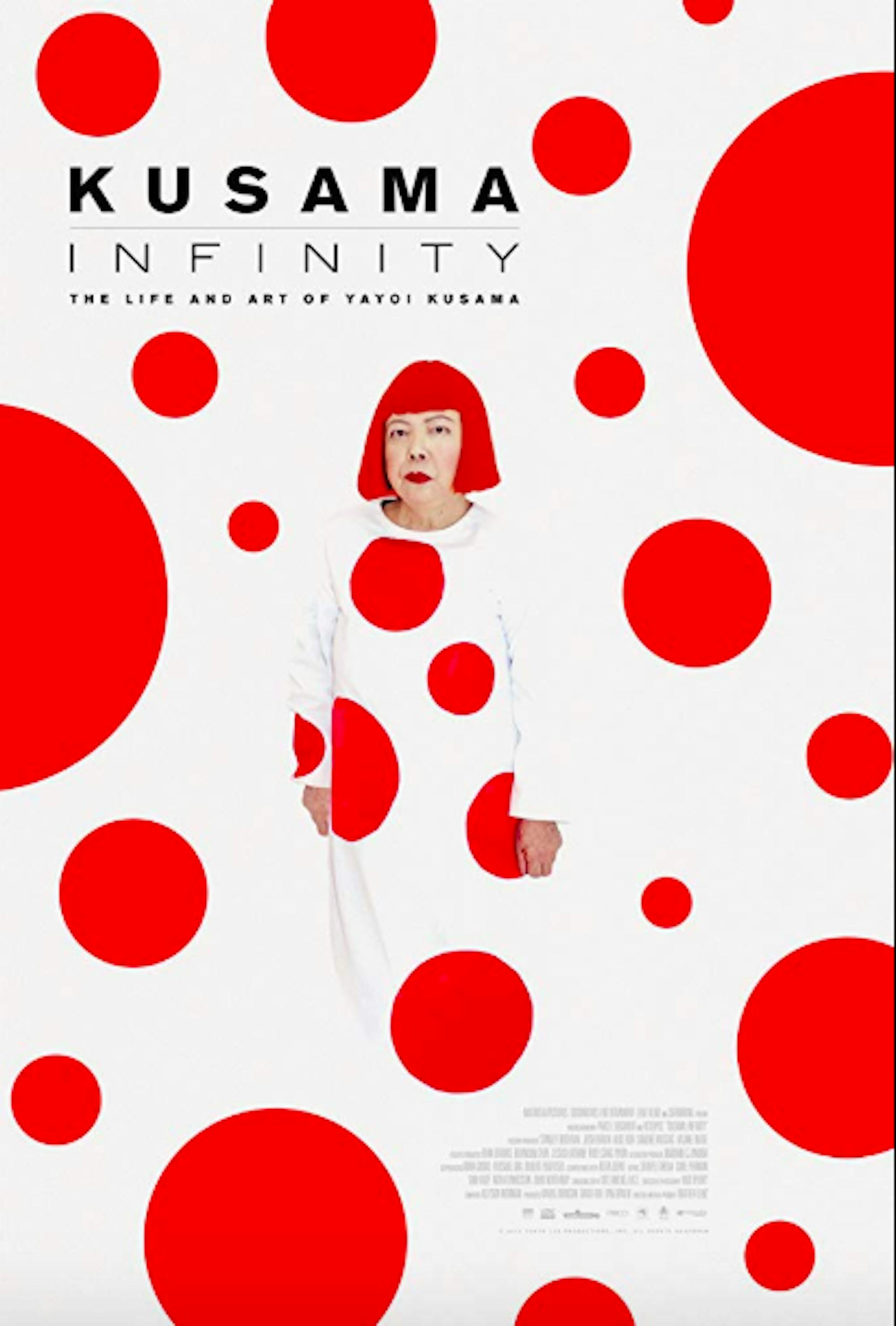Content Warning: This article mentions self-harm.
Visionary contemporary artist Yayoi Kusama's work may be instantly recognizable. Her rise to international fame, however, was not a linear or easy path, as depicted in Magnolia Pictures' biopic “Kusama: Infinity” (2018). Kusama’s “White No. 28” (1960)became the most expensive work by a living female artist when it was sold at auction for $7.1 million in November 2014. While that figure may seem impressive to some, the most expensive work by a living male artist,Jeff Koons' “Balloon Dog (Orange)” (2000) sold at auction for an astonishing $58.4 million in 2013. In this paradigm rests tension between female artists and the male-dominated art world, and how success for the female artist often comes at a much higher emotional cost without equal accreditation — themes that run throughout “Kusama: Infinity,” as well.
The biopic portrays Kusama's life in chronological order, beginning with her difficult childhood in the small Japanese town of Matsumoto. Her family was very wealthy, but the poised and elegant photographs of the family counter the reality. Her mother would often use young Kusama to keep an eye on her promiscuous father, and she recalls seeing her father in many comprising situations with other women. Another traumatic childhood memory that Kusama herself cites as a source of hysteria as well as creativity was her experience in her family’s large flower fields. She recalls getting lost and “obliterated” by the flowers, and the memory loss of spatial reference affects each of her works. Central to the film are Kusama's lifelong mental health struggles, which have both paralyzed her and become the wellspring of her creative energy. In the film, a clip of Kusama’s own words states, “My work is based on developing my psychological problems into art.”
While Kusama had greater opportunities pursuing her artistic career in the United States, she faced even more challenges than other female artists due to her race. The moment the biopic begins to critically discuss how the art world engaged with Kusama is when the energy of the whole film picks up. Whereas the discussion of her childhood was rather slow, the film begins using shorter cuts and often bounces around after Kusama emigrates to New York, possibly mimicking the change from quiet Japanese town life to the big city. Indeed, despite the sluggish start, it is worth keeping up with the film for its more dynamic moments, and all the more fulfilling for viewers who may be unfamiliar with Kusama and her work. All these elements of her childhood and her first interactions with the art world are critical to truly appreciate Kusama’s talent, dedication and resilience.
“Kusama: Infinity” also offers new insights for avid fans of Kusama’s work. The film details how her better-known male contemporaries — Claes Oldenburg, Andy Warhol and Lucas Samaras —all copied Kusama’s innovative and forward-thinking work. In one particularly heart-wrenching moment of the film, Kusama discusses her deep depression after these male artists used her ideas. She recalls an instance when Oldenburg’s wife Pat apologizes to Kusama in person for Oldenburg’s use of her soft sculpture technique. While many art lovers are familiar with the work of Oldernburg, Warhol and Samaras, they will likely be shocked when viewing the comparisons to Kusama’s earlier works and the men’s later works.
Another highlight is the film's thorough documentation of Kusama’s activism, conducted through a series of happenings or public performance. For instance, Kusama conducted a ceremony to wed queer men in her groundbreaking work “Homosexual Wedding” (1968).Discussing the work in the film, Kusama says “All the homosexuals were hiding, so I wanted them to be out in public without any shame.”
The film goes on to discuss many other aspects of how Kusama melded activism with art. Her naked happenings protested the drafting of young Americans to the Vietnam War. Her work “Narcissus Garden” (1966), in which she ordered 1,500 mirrored balls and sold them at two dollars apiece, challenged the elitist and capitalist structures at work in the art world. However, this further ostracized her from the art world, and the film depicts the success of her male counterparts as prompting her to return to Japan, where she was publicly shunned as a scandalous figure.
As later documented in the film, Kusama would go on to be the first solo artist to represent Japan at the 1993 Venice Biennale. The end of the film takes on a more optimistic outlook as Kusama becomes a Japanese contemporary art hero when her work is put on display at the Matsumoto City Museum of Art in her hometown that had once scorned her.
Kusama herself concludes the film stating,“Among waves of people, I have managed to survive this long life. How many times did I think of putting a knife to my neck seeking death? I collected my thoughts and got up again.”
Her uplifiting words inject a tangible energy into the film, one that is undeniable in her works. “Kusama: Infinity” offers much to be learned for both viewers familiar with Kusama’s work, and those who may have never heard of her before. While the film ultimately has to graze the injustices of the art world, the viewer can hopefully apply this critique the next time they attend a museum or gallery. For art enthusiasts and novices alike, “Kusama: Infinity” recounts an amazing life of an artistic genius, whose story alone makes the film worth watching.
'Kusama: Infinity' narrows in on Yayoi Kusama's life, artistic legacy

The promotional poster for the documentary about Yayoi Kusama's life, "Kusama: Infinity" (2018), is pictured.
Summary
Despite a slow start, "Kusama: Infinity" recounts the amazing life of an artistic genius, whose story alone makes the film worth watching.
4 Stars





